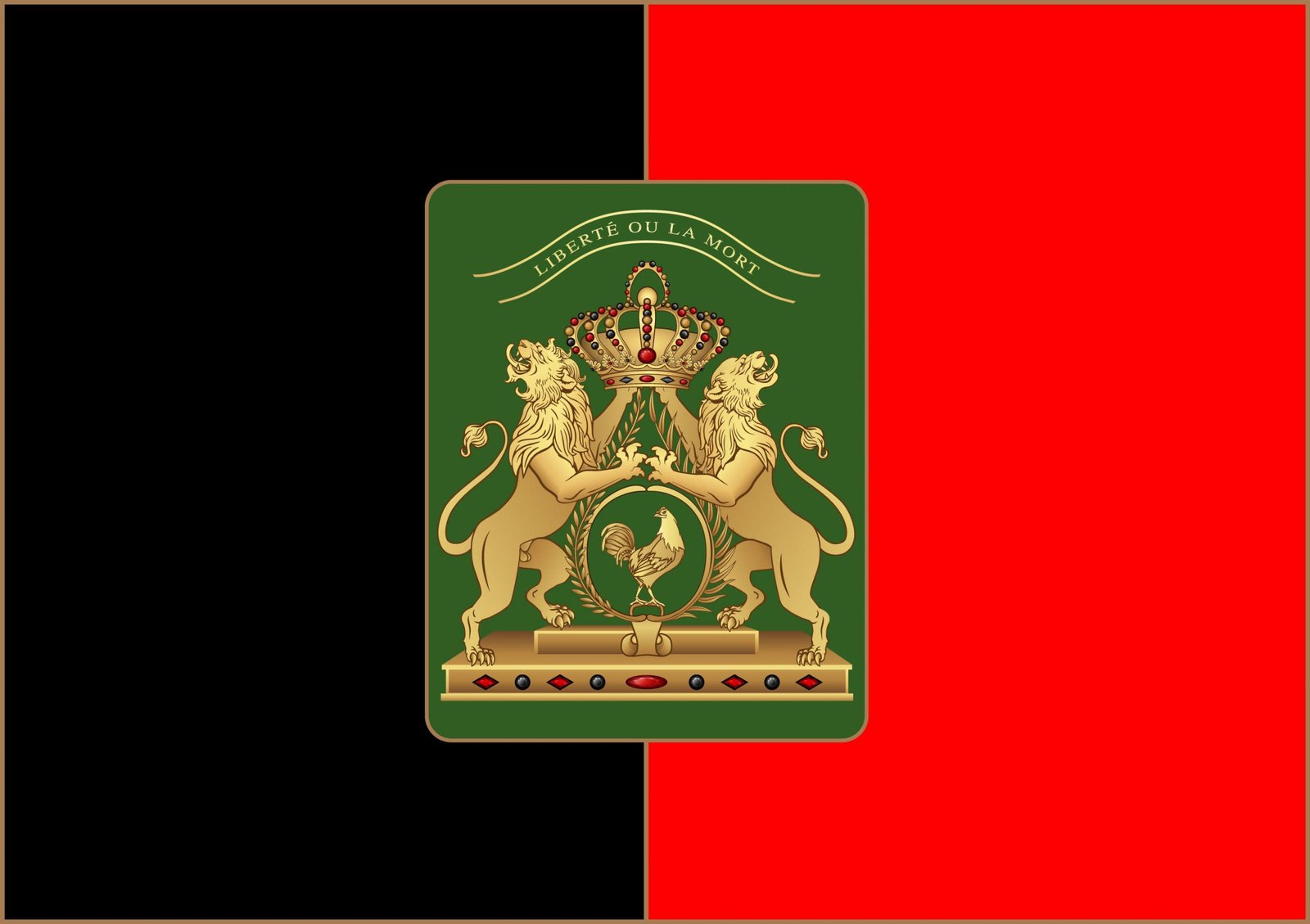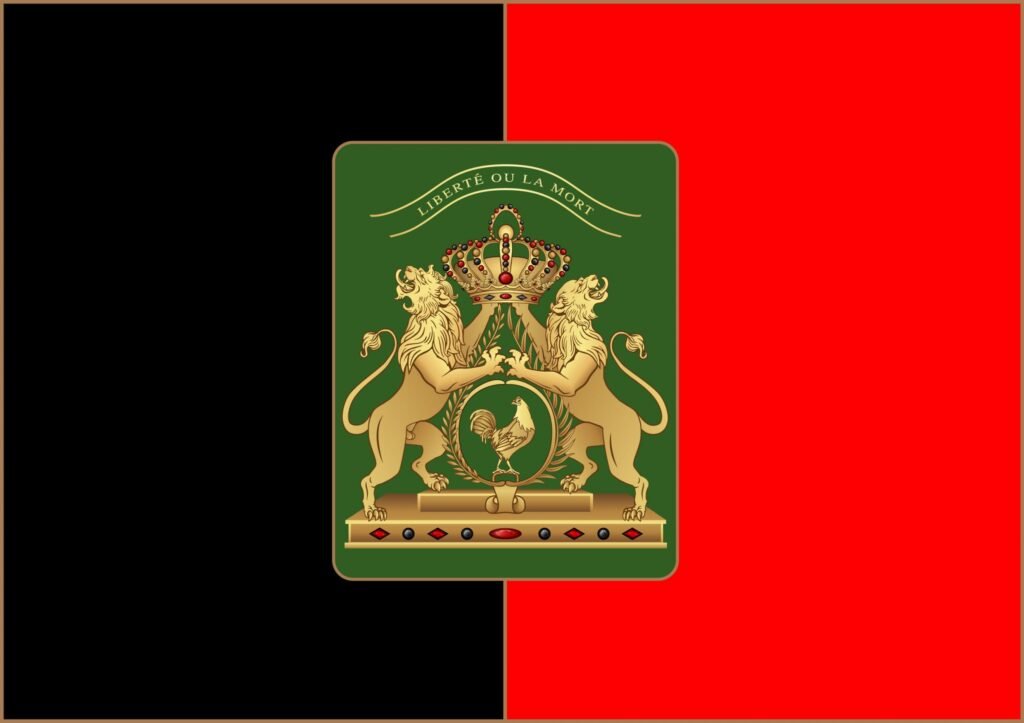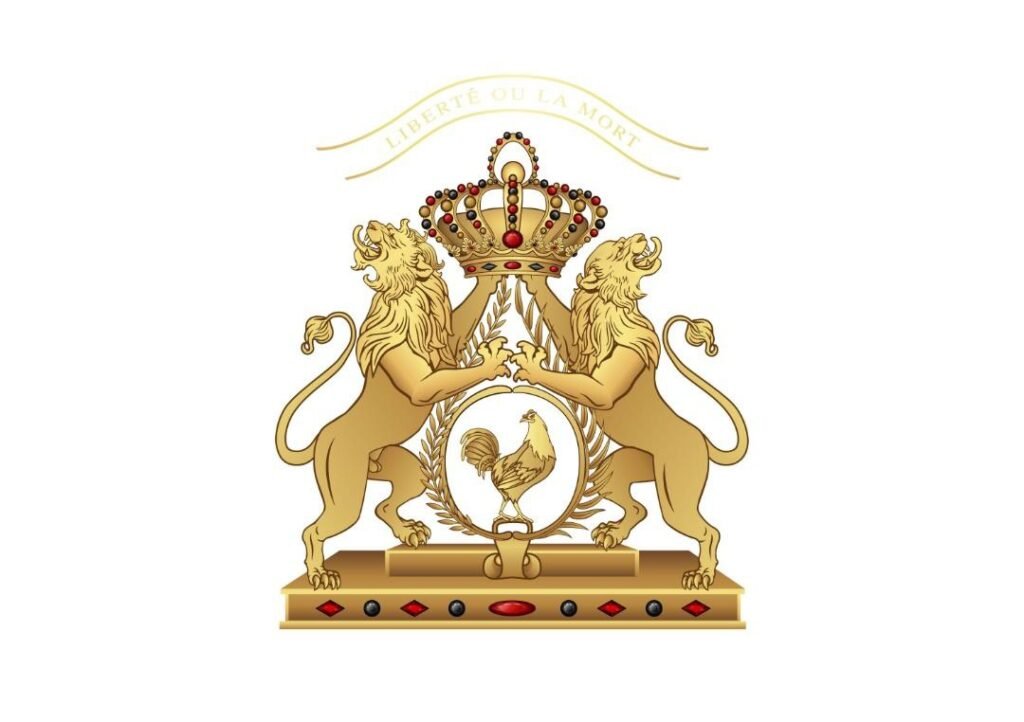Physical Address
304 North Cardinal St.
Dorchester Center, MA 02124
Physical Address
304 North Cardinal St.
Dorchester Center, MA 02124

In the heart of the Caribbean lies a nation with one of the most powerful legacies of resistance, dignity, and self-determination: Haiti. Yet, the symbols representing this historic identity have been diluted over time, often conforming to colonial legacies or foreign political constructs. The flag you see above—a bold red and black bicolor split vertically with a regal green crest at the center—offers a compelling alternative. It is more than just a banner. It is a visual declaration of sovereignty, pride, and revolutionary spirit. Haiti should adopt this flag as its national symbol immediately—and here’s why.

The red and black bicolor is not new. It was first used by Jean-Jacques Dessalines, Haiti’s founding father and revolutionary general, in 1805 after independence from France. The red symbolizes the blood of the people—both African and mixed ancestry—who united to defeat European slavery and colonialism. The black represents the African heritage and the majority of the Haitian people.
By reverting to these original colors, Haiti reconnects with its revolutionary roots. It sheds the blue-and-red tricolor—imposed later under French influence—and reclaims a visual identity rooted in liberation, not compromise.
The crest at the center of the flag features two golden lions holding a royal crown above a rooster, with the defiant phrase “Liberté ou la Mort” (“Liberty or Death”) above. This motto is not merely a slogan—it is the very soul of Haiti’s creation.
Today, when Haiti faces political instability, foreign interference, and internal corruption, this motto reminds its citizens and leaders of what was once non-negotiable: freedom, dignity, and self-determination. Adopting this flag enshrines those principles not only in the constitution, but in the eyes of every Haitian and observer worldwide.
The current Haitian flag—red and blue with a white square and coat of arms—is modeled after the French tricolor. Though historically modified, it still carries the visual DNA of a colonial oppressor. A nation that became the first Black republic in the world through armed resistance against European imperialism should not bear a flag derived from its former master.
This proposed flag makes a clean break from that past. It is unapologetically African, proudly revolutionary, and unmistakably Haitian.
Haitians across the globe—especially in the U.S., Canada, France, and throughout the Caribbean—often seek a unifying symbol to rally around. This flag offers a deeply resonant one. The powerful gold lions evoke strength, the crown symbolizes sovereignty, and the rooster—a longtime emblem of vigilance and rebirth—stands for resilience. The red and black colors speak universally to struggle and pride.
This flag gives the diaspora a unifying emblem to wear, fly, and share—one that says, “We know where we come from, and we are not ashamed.”
A flag is the first thing the world sees. It flies in embassies, on passports, during international events, and in protests. Haiti’s current flag does little to differentiate itself or express its unique story of triumph against slavery.
This new design, however, commands attention. It is regal without being elitist, revolutionary without being militant, and simple without being generic. It tells a visual story of a Black nation that defied the odds and stood up for humanity before the world was ready to acknowledge it.
Haiti’s problems are not merely economic or political—they are psychological and spiritual. Decades of corruption, foreign occupation, and poverty have eroded national confidence. A new flag can spark a symbolic renaissance. Changing the flag is not just about design—it’s about resetting the nation’s mindset.
This flag can mark the beginning of a national renewal. It can symbolize the end of neocolonial dependency and the beginning of an independent, Afrocentric, proud future.
Throughout history, Haiti inspired liberation movements across Latin America and Africa. Today, its role as a global Black leader has been diminished. Reclaiming a powerful and unique flag is a step toward restoring that moral authority.
Imagine this flag raised at the UN, in international sporting events, and during cultural parades—it would send a message that Haiti is no longer apologizing for its past, but leading into the future.

Flags are not just symbols. They are declarations. Haiti declared itself free in 1804. In 1805, it created a flag worthy of that freedom—bold, defiant, and revolutionary. That flag has been hidden for too long. It’s time to raise it again.
This red and black flag, adorned with the royal lions, the vigilant rooster, and the eternal motto “Liberté ou la Mort,” is more than art. It is a mirror of who Haitians were, are, and must be again.
Let the world see it. Let Haiti raise it. Let freedom reign again.